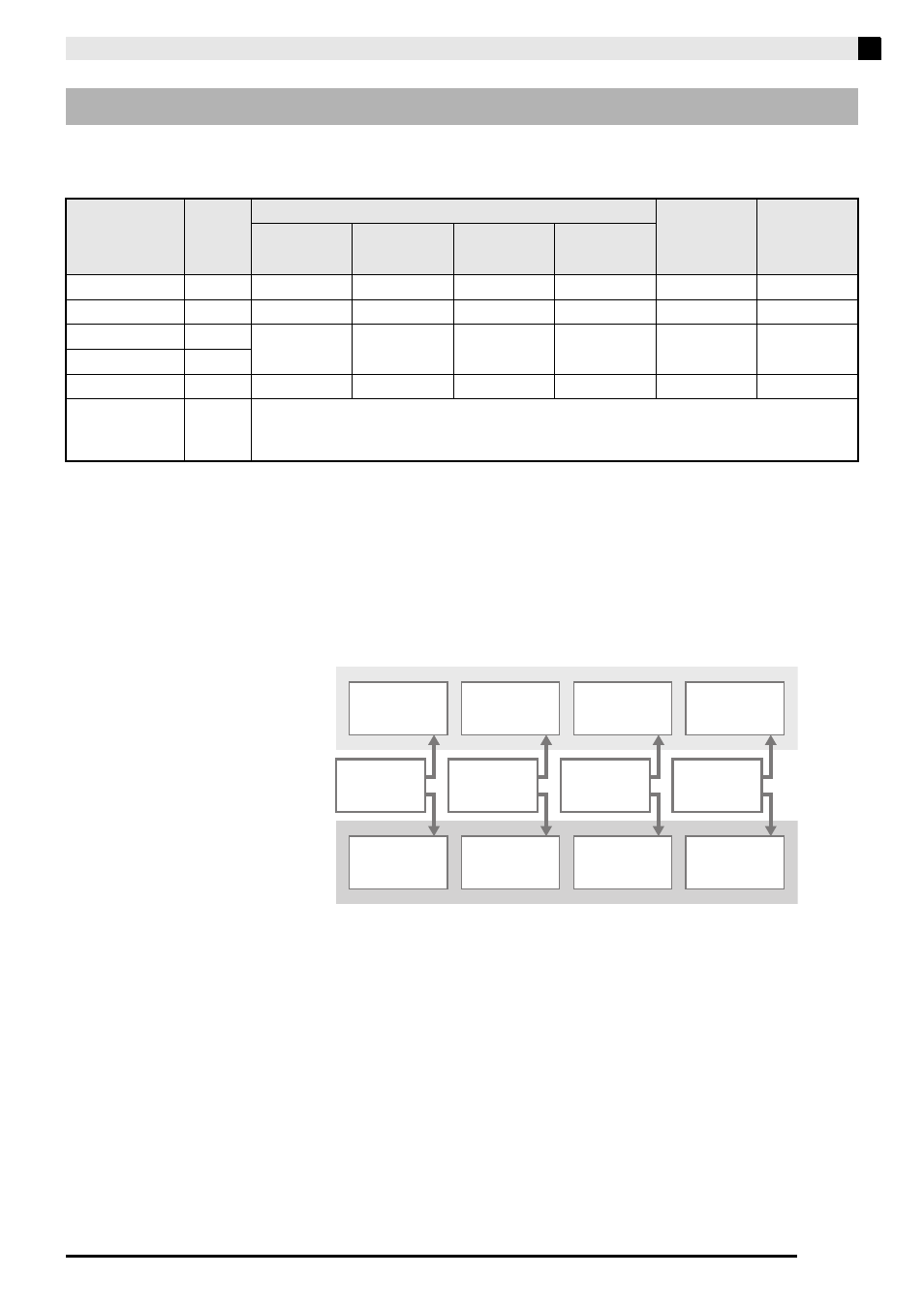Casio PX-5S Tutorial User Manual
Page 6

General Guide
E-5
The tones of this Digital Piano are made up of the 16 parts shown below, plus externally input parts.
■ Relationship between Zones, Parts, and Tones
Zone, Part, MIDI Receive Channel, and Tone Relationships
Part Name
Part
Number
Selectable Tone Categories
MIDI Receive
from External
Source
Song
Sequencer
Piano
Melody
Tones
Drum Sounds
Hex Layer
Zone Part 1*
01
O
O
O
O
O
O
Zone Part 2
02
O
O
–
O
O
O
Zone Part 3
03
O
O
–
–
O
O
Zone Part 4
04
- - -
05 - 16
O
O
O
–
O
O
External Input
–
–
Sound input via
fo
(LINE IN R, L/MONO)
and
fq
(AUDIO IN)
on the back of the
Digital Piano (page E-36)
*
About zones and zone parts
Keyboard, pedal, button, and other operations not only affect the Digital Piano’s tones, they are also sent as
MIDI data and affect any external device (electronic musical instrument or computer) connected to the Digital
Piano. Because of this, parameter setting areas called “zones” are used to configure common settings for
internal and external use. The sound source parts inside the Digital Piano are called “zone parts”. For example,
if you select a tone for the Digital Piano’s Zone 2, that tone is used for the internal sound source’s Zone 2 and
for the part that corresponds to MIDI Channel 2 of the external device.
•
You can change the relationships between zones and MIDI data send channels, if you want (page E-31).
You can perform using four tones at the same time. You also can use “stage setups” to register tone, phrase
sequencer, and other Digital Piano setups for quick and simple recall while you are performing.
Zone Part 1
Zone Part 2
Zone Part 3
Zone Part 4
(MIDI
Channel 1)
(MIDI
Channel 2)
(MIDI
Channel 3)
(MIDI
Channel 4)
Zone 1
Setting
Zone 2
Setting
Zone 3
Setting
Zone 4
Setting
Digital Piano Internal Sound Source
External Device
